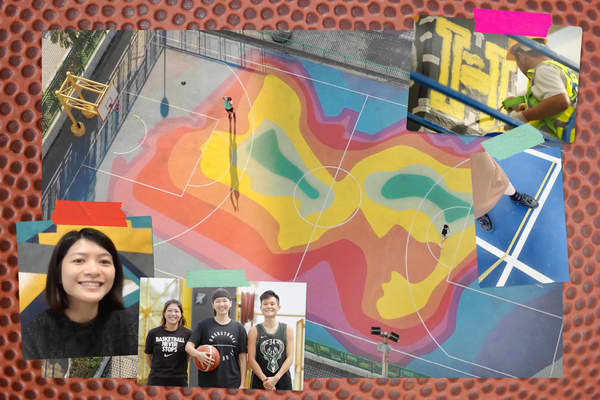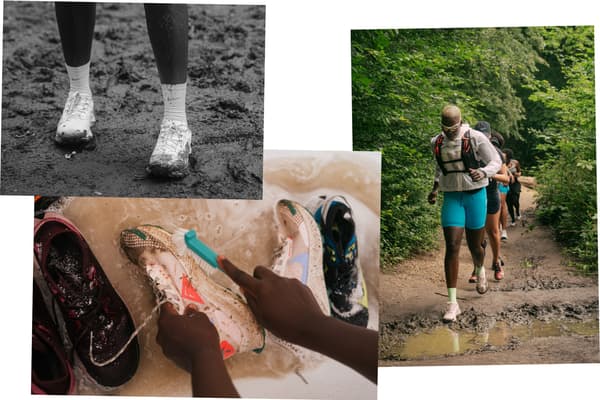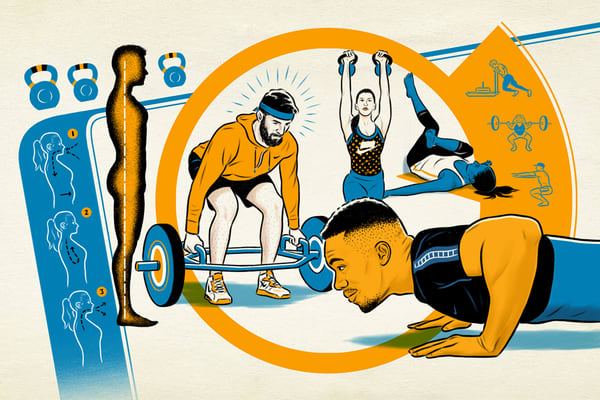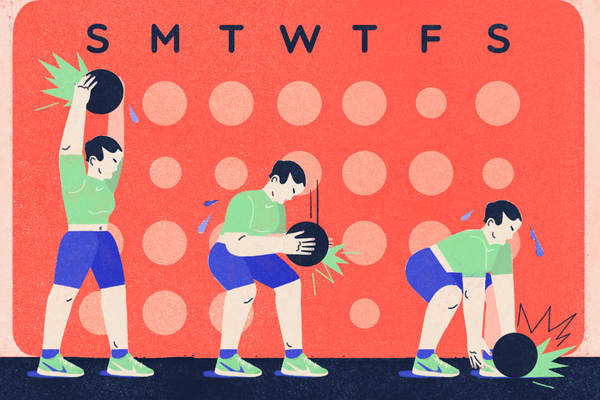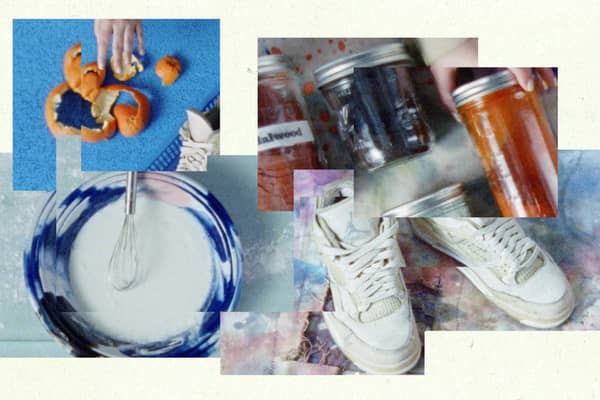Road Ready: Nike Sole 2.0 x Össur Running Blade
Innovation
Inspired by adaptive athletes' DIY equipment hacks, Nike designers are developing life-changing ways to run on prosthetics. Here's the latest iteration.
"Proof of Concept" is a series showcasing renegade innovations in sport, wellness and ability.
Picture a world-class athlete piecing together their own equipment with scissors and glue in their garage.
It may sound crazy, but that was the case for adaptive triathlete Sarah Reinertsen, who used to saw the soles off shoes to cobble makeshift traction onto her running blade (a specialised prosthetic leg used for sport).
"We can do better!" was the immediate reaction from Tobie Hatfield, a veteran Nike innovator and former athletics coach, when he first saw Sarah's ad hoc fix. The resulting Nike Sole 1.0—a quick-change traction system for Össur-brand running blades—changed the game for adaptive athletes everywhere, allowing them to retire worn-down soles in favour of fresh tread in a matter of seconds.
As revolutionary as the 1.0 version was, "we never design a perfect product", as Tobie says in the film above—affirming that when it comes to innovation, there is no finishing line. Nine years later, a new crew of athletes and innovators have grabbed the baton and pushed things even further.
Watch the film for more on Nike Sole 2.0's origin story. Then read below to learn where the project's lead designer, George Xanthos, took things from there.
Meet George, lead designer of the Nike Sole 2.0. (1) Nike Sole 1.0 photos from 2012. (2) Early prototype of the 2.0's new and improved latch system in action.
Phase 1: Attachment Issues
Takeaway: Start with Empathy—and Ambition
Having worked on functional breakthroughs like Nike FlyEase (easy on-off solutions) and Nike Pulse (high-endurance footwear for healthcare workers), George is no stranger to empathetic design—the process of putting yourself in someone else's shoes to better understand what they need.
For the Nike Sole 2.0, that meant getting into the headspace of running blade users. Imagine Sarah's glued-on solution from earlier; fast-forward a few months, and there's a worn-out beater fused to your foot. That's why the Nike Sole interchange system is so crucial—and why the team was determined to make the 2.0 easier to attach and remove than ever before.
Not satisfied at stopping there, they also set their sights on introducing options—because who wants just one pair of shoes? Case in point: athletes who need to go from road sole to athletics spikes. "Running blades are expensive", George points out. "Most adaptive athletes can't afford to have a dedicated blade just for competition", hence the need to swap soles on their one all-purpose blade.
The twists and turns of devising a new attachment mechanism are detailed in the film above—but that hard-fought win was just the beginning of the journey for George.
(1) Paralympic long jumper Markus Rehm and George collaborating at Össur HQ in Iceland. (2) Slo-mo footage of Markus testing prototypes. (3) Markus had customised his long-jump blade to get front spikes as far forward as possible.
Phase 2: Innovator x Athlete
Takeaway: Be Ready to Be Wrong
After catching an overnight flight to Reykjavík, George headed straight to the headquarters of Össur prosthetics—long-time partner on the Nike Sole initiative—and got ready to put months of design work to the test.
There, he leapt into a marathon work session with Paralympic long jumper Markus Rehm. Within minutes, "plan A" was out of the window. Watching slo-mo footage of Markus running and jumping, they realised that George's initial prototype wasn't making proper contact with the ground!
In an effort to reduce weight, he had shortened the length of the Sole—apparently a touch too far. "Right away, I saw Markus was landing on the blade behind the traction area", George says. Unfazed, they hit the workshop. "We started hacking and adjusting the prototypes and re-testing".
That was just one "aha" moment the two had over the course of a highly productive weekend. Other improvements included removing plastic studs that could present a slipping hazard for long jumpers, and shifting spikes to the very front edge for targeted traction.
(1) George found that very few elite athletes want a midsole (cushioning between their blade and spike pad)—"the blade is [already] a big spring". (2) Depending on their sport, different athletes use different spike configurations. (3) George's à la carte spike pad option has pre-scored cutting grooves to encourage customisation.
Phase 3: Running the Gauntlet
Takeaway: Turn Setbacks into Opportunities
Next at Össur HQ, George dug into rapid-fire feedback sessions with even more world-class adaptive athletes.
Barely out of the gate, he hit a bit of a brick wall: When asked whether they'd use the Nike Sole's signature interchange system, the consensus from the dozen or so athletes was a resounding "no".
Unlike most adaptive runners, those at the pinnacle tend to have access to multiple blades—and can commit to fully customising one for competition (which usually means gluing a streamlined spike plate directly on).
This curveball didn't mean all was for naught. George recalls that the athletes also "quickly saw the value of the interchange system for the general public of adaptive athletes—and how they themselves would have benefitted [from it] earlier in their athletic careers, when they only had one running blade".
Rather than designate elite athletes irrelevant to the project at hand, George instead identified a whole new user group—and a highly inspiring one.
"I like to think of [them] as race-car drivers", George says of virtuoso runners and their relationships to their blades. "They're constantly fine-tuning this engine, stripping it of weight, making modifications. It's incredible as a designer to see".
He took the opportunity to further optimise an à la carte spike-plate option that encourages customisation—so jumpers can set up differently than sprinters and so on.
Iceland's natural geometry inspired the Sole 2.0 spike pad design, where ridges rise to hug and support spike mounds, and form secondary traction teeth at the outer edge.
Phase 4: Inspiration Trip
Takeaway: Form Can Lead to Function
After a packed week of technical insights with Össur's athletes and engineers, George was ready for some purely sensory stimulation.
He rented a car and got lost in the unique sights and sounds of Iceland, eventually arriving at Svartifoss waterfall—an astounding natural wonder that he describes as the most impactful part of his research excursion.
"It looks like a huge pipe organ, the way the basalt columns are vertically arranged", George recalls. "The visual rhythm they create is breathtaking. They're both geometric and organic at the same time".
He applied this inspiration to the Sole 2.0 spike plate—not just as an appealing visual motif, but as a source of practical utility, with bevelled ridges that fluidly ramp up to provide more material where needed.
(1) Every bump and ridge on the new road sole serves a purpose. (2) Back at Nike HQ in Oregon, George had access to fewer wear-testers—but who better than Sarah, who started the team on this journey in the first place?
Phase 5: Finishing Touches
Takeaway: Better Is Temporary—So What's Next?
With the spike plate on a solid path, George turned his attention to the road sole. For ideas, he thought back to the first time he saw the Nike Sole 1.0 in action: on kids having fun at a Challenged Athletes Foundation (CAF) event a few years ago.
"I saw young adaptive athletes running on grass, running on the road, playing basketball and other sports", he recalls. "It was inspiring how the combination of Össur blade and Nike Sole liberated these athletes, who were full of energy and optimism as they learnt techniques at the CAF clinics to help them move better".
To improve the multi-sport, multi-surface versatility for athletes who are into every activity under the Sun, George says he "took the best traction elements from basketball and running—herringbone and lugs—and sought to create the perfect hybrid".
The resulting mash-up can be seen from early sketch to finished product above. But, like any good innovator, George is already thinking ahead to future improvements—which might include a full arsenal of sport-specific traction options.
"Maybe [we'll make] an offering that's even more robust for trail running", he muses. "And maybe one just for basketball, [so] you could have four different interchangeable soles".
Or more, for that matter. When it comes to innovating for adaptive athletes, the future is wide open. As George puts it, "Who knows what's possible?" One thing's certain: He'll do his best to find out.
Want one? If you or someone you know is curious how to get hold of a Nike Sole 2.0, visit the website of our friends at Össur prosthetics. The Sole 2.0 traction system comes standard with selected Össur products.
Film: Azsa West
Words: Brinkley Fox
